Alireza Gharahighehi
HypeRS: Building a Hypergraph-driven ensemble Recommender System
Jun 22, 2023Abstract:Recommender systems are designed to predict user preferences over collections of items. These systems process users' previous interactions to decide which items should be ranked higher to satisfy their desires. An ensemble recommender system can achieve great recommendation performance by effectively combining the decisions generated by individual models. In this paper, we propose a novel ensemble recommender system that combines predictions made by different models into a unified hypergraph ranking framework. This is the first time that hypergraph ranking has been employed to model an ensemble of recommender systems. Hypergraphs are generalizations of graphs where multiple vertices can be connected via hyperedges, efficiently modeling high-order relations. We differentiate real and predicted connections between users and items by assigning different hyperedge weights to individual recommender systems. We perform experiments using four datasets from the fields of movie, music and news media recommendation. The obtained results show that the ensemble hypergraph ranking method generates more accurate recommendations compared to the individual models and a weighted hybrid approach. The assignment of different hyperedge weights to the ensemble hypergraph further improves the performance compared to a setting with identical hyperedge weights.
An Adaptive Hybrid Active Learning Strategy with Free Ratings in Collaborative Filtering
Mar 11, 2022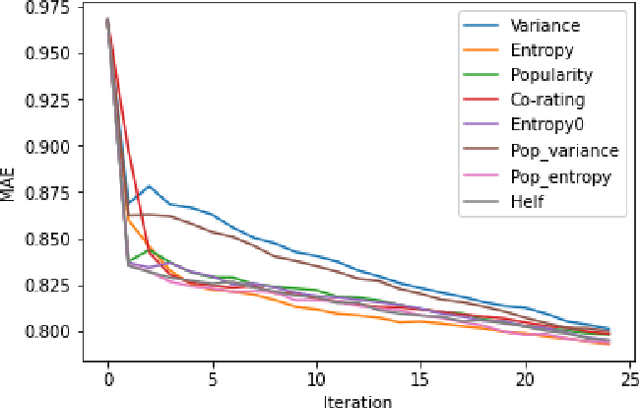
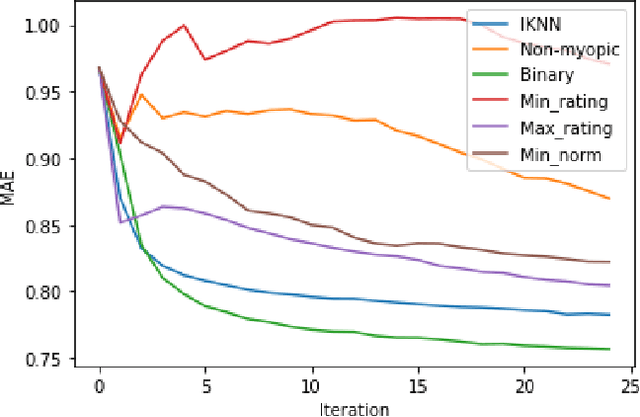
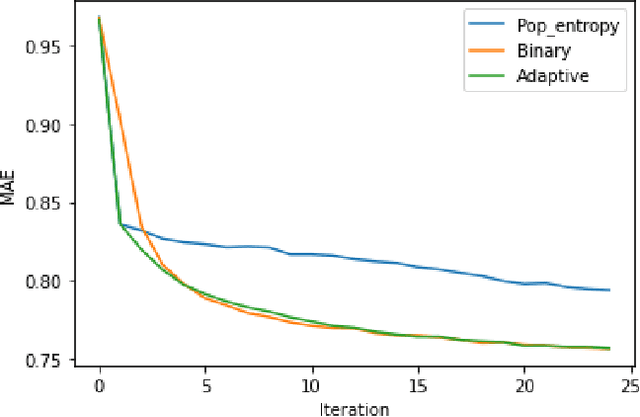
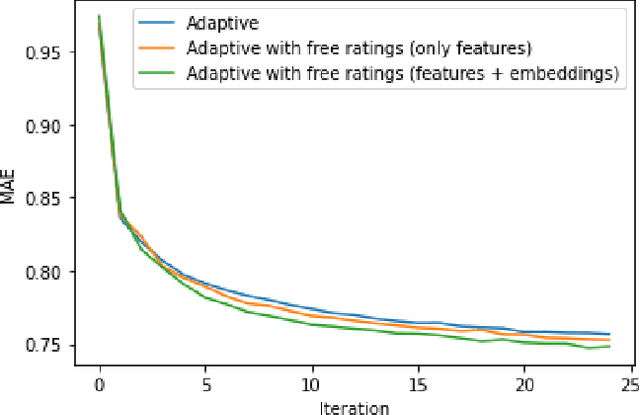
Abstract:Recommender systems are information retrieval methods that predict user preferences to personalize services. These systems use the feedback and the ratings provided by users to model the behavior of users and to generate recommendations. Typically, the ratings are quite sparse, i.e., only a small fraction of items are rated by each user. To address this issue and enhance the performance, active learning strategies can be used to select the most informative items to be rated. This rating elicitation procedure enriches the interaction matrix with informative ratings and therefore assists the recommender system to better model the preferences of the users. In this paper, we evaluate various non-personalized and personalized rating elicitation strategies. We also propose a hybrid strategy that adaptively combines a non-personalized and a personalized strategy. Furthermore, we propose a new procedure to obtain free ratings based on the side information of the items. We evaluate these ideas on the MovieLens dataset. The experiments reveal that our proposed hybrid strategy outperforms the strategies from the literature. We also propose the extent to which free ratings are obtained, improving further the performance and also the user experience.
Diversification in Session-based News Recommender Systems
Feb 05, 2021
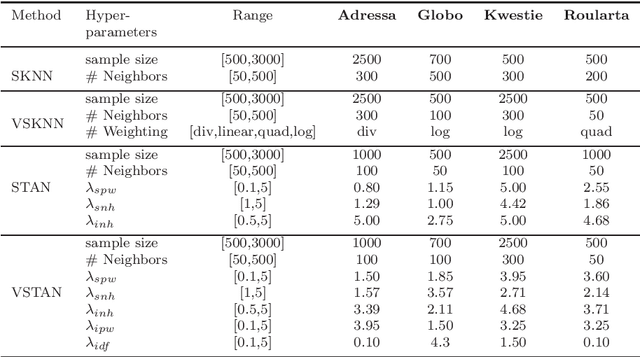
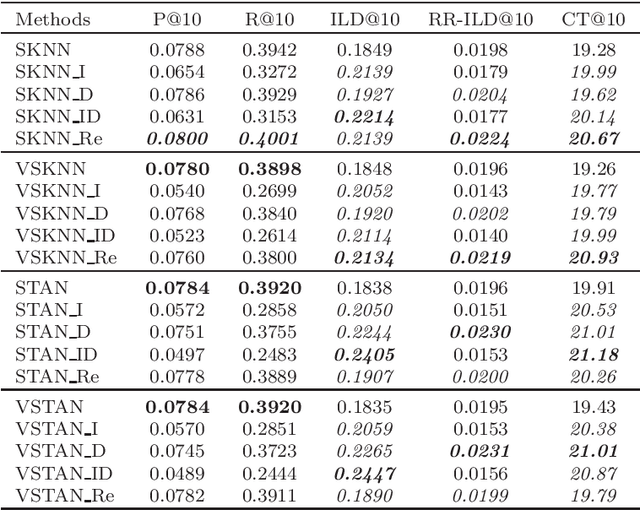
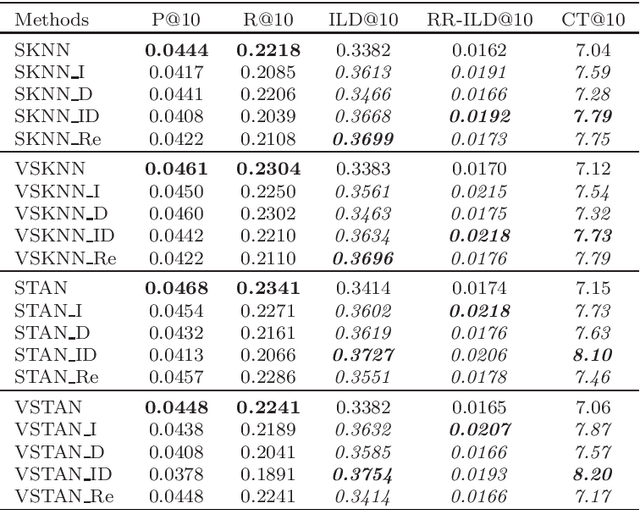
Abstract:Recommender systems are widely applied in digital platforms such as news websites to personalize services based on user preferences. In news websites most of users are anonymous and the only available data is sequences of items in anonymous sessions. Due to this, typical collaborative filtering methods, which are highly applied in many applications, are not effective in news recommendations. In this context, session-based recommenders are able to recommend next items given the sequence of previous items in the active session. Neighborhood-based session-based recommenders has been shown to be highly effective compared to more sophisticated approaches. In this study we propose scenarios to make these session-based recommender systems diversity-aware and to address the filter bubble phenomenon. The filter bubble phenomenon is a common concern in news recommendation systems and it occurs when the system narrows the information and deprives users of diverse information. The results of applying the proposed scenarios show that these diversification scenarios improve the diversity measures in these session-based recommender systems based on four news datasets.
Fair Multi-Stakeholder News Recommender System with Hypergraph ranking
Dec 01, 2020

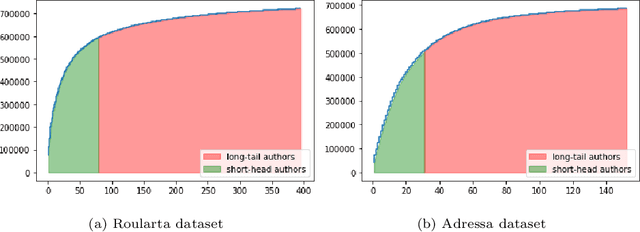

Abstract:Recommender systems are typically designed to fulfill end user needs. However, in some domains the users are not the only stakeholders in the system. For instance, in a news aggregator website users, authors, magazines as well as the platform itself are potential stakeholders. Most of the collaborative filtering recommender systems suffer from popularity bias. Therefore, if the recommender system only considers users' preferences, presumably it over-represents popular providers and under-represents less popular providers. To address this issue one should consider other stakeholders in the generated ranked lists. In this paper we demonstrate that hypergraph learning has the natural capability of handling a multi-stakeholder recommendation task. A hypergraph can model high order relations between different types of objects and therefore is naturally inclined to generate recommendation lists considering multiple stakeholders. We form the recommendations in time-wise rounds and learn to adapt the weights of stakeholders to increase the coverage of low-covered stakeholders over time. The results show that the proposed approach counters popularity bias and produces fairer recommendations with respect to authors in two news datasets, at a low cost in precision.
 Add to Chrome
Add to Chrome Add to Firefox
Add to Firefox Add to Edge
Add to Edge